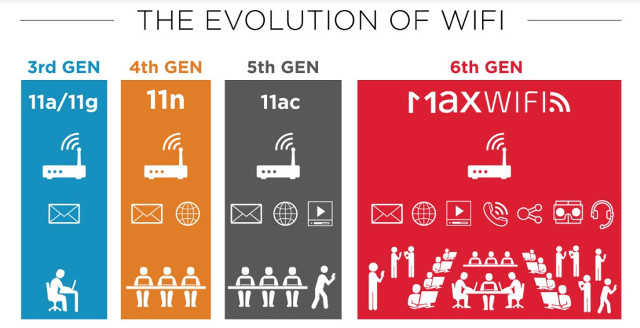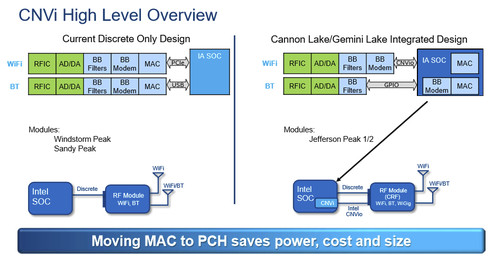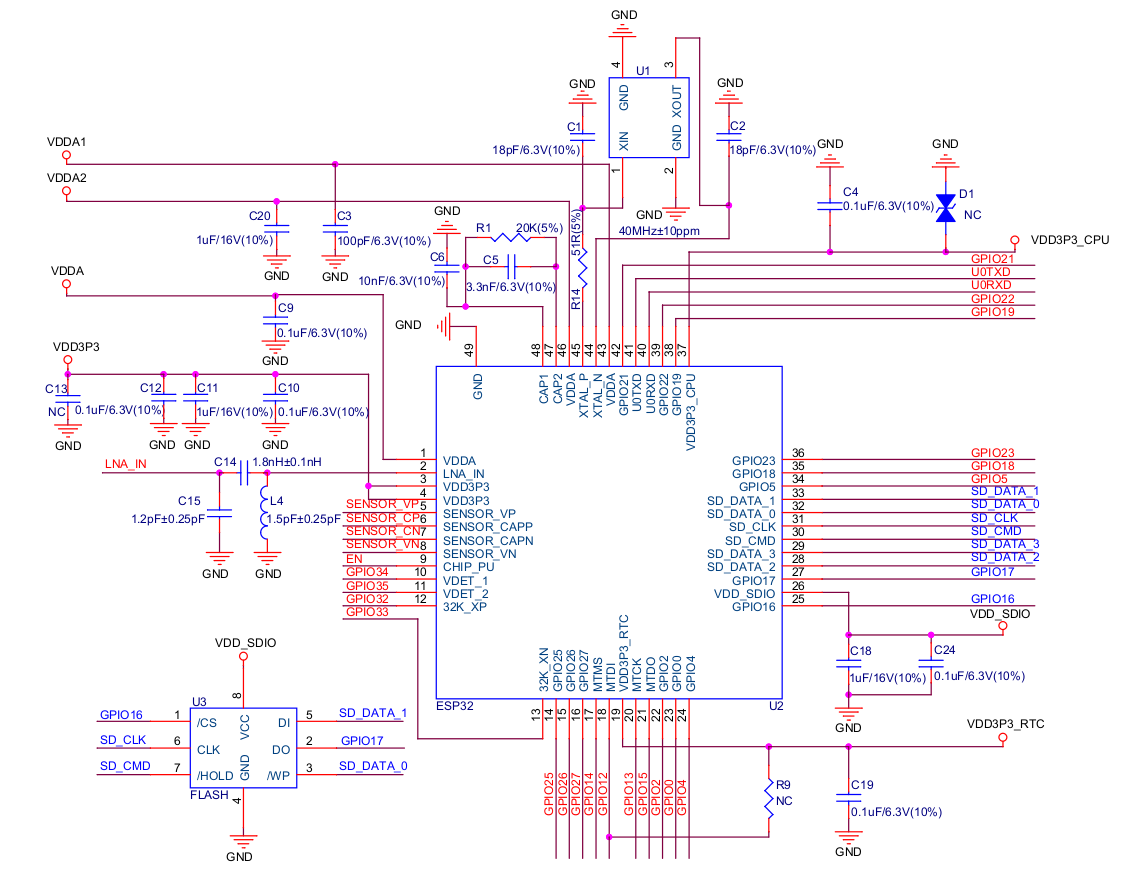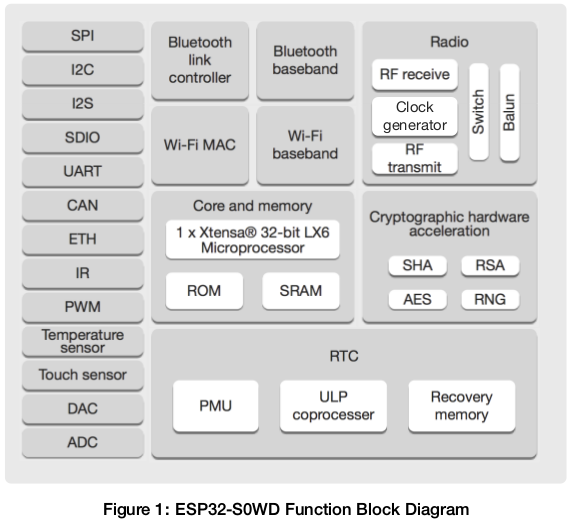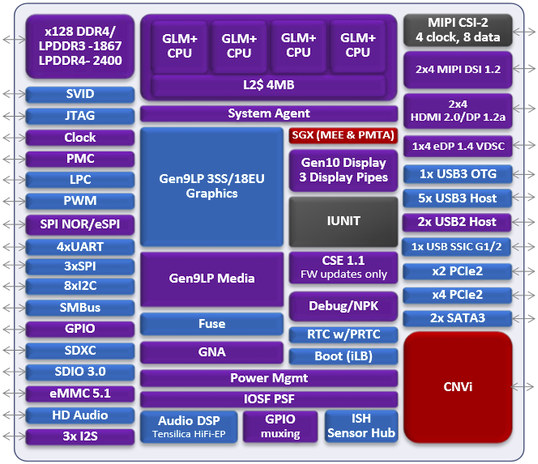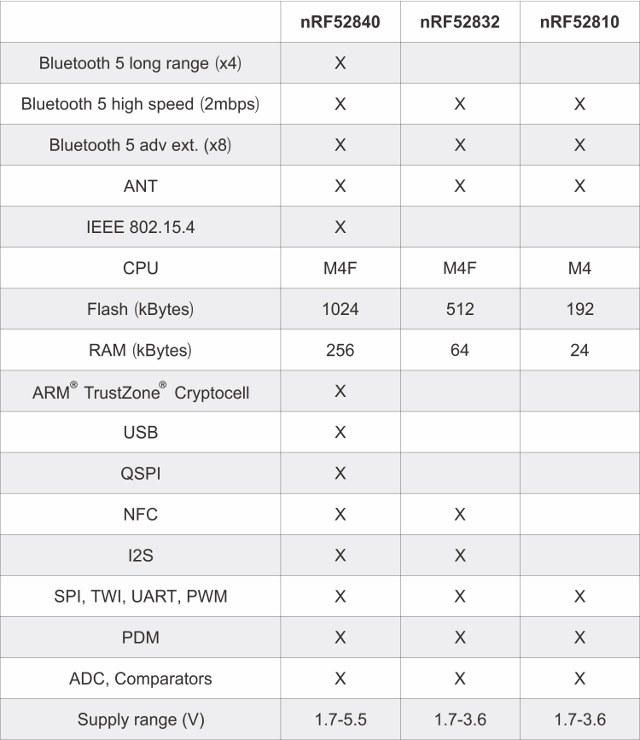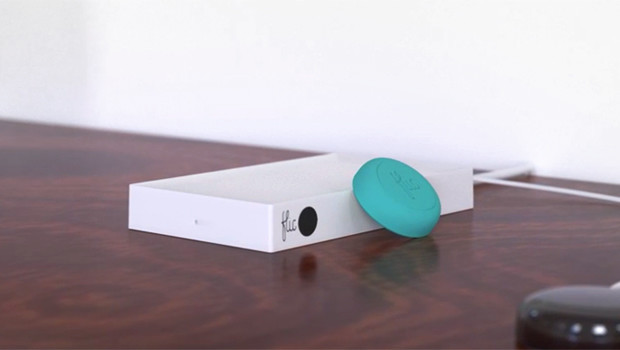We’ve already written about the new 802.11ax WiFi standard that promises up to 10 Gbps data rates, support for 2.4 & 5 GHz bands, up to 4x longer range, and better handling of high density scenarios. It appears 802.11ax we’ll be known as Max WiFi to the masses, and Broadcom has unveiled Max WiFi solutions for home and enterprise routers, as well as a smartphones. There are currently three Max WiFi solutions from Broadcom: BCM43684 & BCM43694 4×4 802.11ax chips, respectively optimized for residential and enterprise access points, share the same key features: Support for four streams of 802.11ax 4.8 Gbps PHY rate 160 MHz channel bandwidth 1024 QAM modulation Uplink & downlink OFDMA (Orthogonal Frequency Division Multiple Access) MU-MIMO ZeroWait DFS (Dynamic Frequency Selection) AirIQ interference identification Full compliance to IEEE and WFA 802.11ax specifications BCM4375 smartphone combo chip: Support for 2-streams of 802.11ax Bluetooth 5 including Low-Energy Long […]
Intel Wireless-AC 9560 CRF Module Adds 802.11ac WiFi and Bluetooth 5 to Gemini Lake/Cannon Lake Processors
Last week, we saw that the upcoming Intel Gemini Lake processors integrated a CNVi (Connectivity Integration) block with a WiFi MAC, and Bluetooth MAC & Baseband Modem connected over a CNVio interface to a separate CRF (Companion RF) module handling the RF part. The design change is shown in the block diagram below with the old design on the left using wireless modules connected over PCIe and USB, and the new design on the right used in Cannon Lake/Gemini Lake processors which aims at saving power, cost, and size. Intel has now uploaded the product brief for their first wireless CRF module: Intel Wireless-AC 9560 with the following key features: Connectivity WiFi Dual band 802.11 a/b/g/n/ac wave 2 2×2 WiFi up to 1.73 Gbps using 160 MHz channels Standards – IEEE 802.11a/b/g/n/ac, 802.11d, 802.11e, 802.11h, 802.11i, 802.11w, 802.11r, 802.11k, 802.11v pending OS support Security WPA and WPA2, 802.1X (EAP-TLS, TTLS, […]
ESP32-PICO-D4 System-in-Package Combines ESP32, 4MB SPI Flash, a Crystal Oscillator, and Passive Components
Espressif Systems has revealed another ESP32 variant, but this time it’s not an SoC, but a 7x7mm system-in-package (SIP) that comes ESP32 dual core processor, a 4MB SPI flash, a crystal oscillator and various passive components, so that you don’t need to include those in your design, and create an ultra-compact PCB for wearables and other space-constrained applications. ESP32-PICO-D4 SiP specifications: SoC – ESP32 with two Tensilica LX6 cores, 448 KB ROM, 520 KB SRAM (inc. 8KB RTC memory), 1kbit eFuse On-module Flash – 4MB SPI flash Connectivity WiFi – 802.11 b/g/n/e/i (802.11n up to 150 Mbps) Bluetooth – Bluetooth V4.2 BR/EDR and BLE specification; ; class-1, class-2 and class-3 transmitter; Audio: CVSD and SBC SIP Interfaces SD card, UART, SPI, SDIO, LED PWM, Motor PWM, I2S, I2C, IR GPIO, capacitive touch sensor, ADC, DAC, LNA pre-amplifier Sensors – On-chip Hall sensor & temperature sensor Clock – On-module 40 MHz crystal […]
Single Core ESP32-S0WD WiSoC Datasheet and Price
I’m subscribed to Espressif Systems’ notification system so that I received an email each time there’s a documentation update on their website, and this morning they posted ESP32-S0WD Datasheet, the single core version of ESP32 processor, which we reported in our post about ESP32 5×5 packages. Beside the small 5x5mm 48-pin package, and single Xtensa 32-bit LX6 microprocessor, it looks to be the same as the frequently used ESP32-D0WDQ6 with a 6x6mm 48-pin package. The CPU & Memory part of the datasheet reads: ESP32-S0WD: Xtensa single–core 32-bit LX6 microprocessor, up to 200 DMIPS 448 KB ROM 520 KB SRAM 16 KB SRAM in RTC QSPI flash/SRAM, up to 4 x 16 MB Power supply: 2.3V to 3.6V While ESP32 datasheet shows a dual core up to 600 MIPS, so maybe the max frequency is also limited. I could not find any ESP32-S0WD module or board just yet, but GridConnect is […]
Intel Gemini Lake Block Diagram and Yet More Info
So yesterday, I wrote about some of the new features of Intel Gemini Lake processors like native HDMI 2.0, 4-wide pipeline, 10-bit VP9, and possible built-in 802.11ac wireless controller. I went to bed, and somehow this morning I woke up with something that looks like Gemini Lake (GLK) block diagram, and a few more details. So we indeed have HDMI 2.0 output, as well as DP 1.2a and eDP 1.4, and an embedded wireless controller via the CNVi (Connectivity Integration Architecture) block for WiFi’s MAC and Bluetooth’s MAC + Baseband modem. We’ll have plenty of USB 3.0 host interfaces, and the usual PCIe and SATA 3 interfaces. Still no UFS support, but eMMC 5.1 is supported, as well as x128 DDR4, LPDDR3 and LPDDR4 memory up to 2400 MHz (No ECC support). Cache size is confirmed to be 4MB for up to four GoldMont Plus (GLM+) cores, which combined with […]
Nordic Semi nRF52840 vs nRF52832 vs nRF52810 Comparison for Bluetooth 5 Applications
Bluetooth 5 was formally introduced earlier this year with promises of four times the range, and twice the speed. Several companies offer chips that are compatible with the new standard, and among them Nordic Semi offers Bluetooth 5 ready solutions via nRF52840, nRF52832, nRF52810 Bluetooth SoCs. However, if you thought – like I did – that all three would provide the same Bluetooth 5 support with just some differences in memory, storage and performance, a comparison table put together by Raytac Corporation will show that among the three SoCs only nRF52840 will support the longer range, while the two older SoC only support the extra bandwidth offered by Bluetooth 5. I could find a blog post about a long range demo that confirms the above: Two nRF52840 Preview Development Kits (PDK) or nRF52832 Development Kits. A combination of the two different kits can also be used. Notice that if the […]
Bluetooth Low Energy Now Supports Mesh Networking for the Internet of Things
The Bluetooth Special Interest Group (SIG) has announced support for mesh networking for BLE, which enables many-to-many (m:m) device communications, and is optimized for large scale device networks for building automation, sensor networks, asset tracking solutions, and other IoT solutions where up to thousands of devices need to reliably and securely communicate with one another. The standard actually specifies 32,767 unicast addresses per mesh network, but that number of nodes is not achievable right now. Mesh networking works with Bluetooth Low Energy and is compatible with version 4.0 and higher of the specifications. It requires SDK support for the GAP Broadcaster and Observer roles to both advertise and scan for advertising packets, and the FAQ claims Mesh Networking does not require extra power, and the devices only need to wake up at least once every four days or when they have data to transmit. Mobile apps connecting to mesh networking products […]
Flic Hub Controls WiFi, Bluetooth, and IR Devices with Bluetooth LE Buttons (Crowdfunding)
This week-end, I wrote about 1btn open source WiFi button that can allow you directly control WiFi appliances, and/or set scenes without the need for a smartphone. We also discussed limitations of WiFi due to high power consumption, security issues and the one-way aspect of RF communication, and that Bluetooth 5 may be a better option for range and battery life if possible. Flic Hub is another way to approach the issue, as it combines Bluetooth LE buttons with a gateway supporting WiFi, Bluetooth, and infrared. Flic Hub gateway specifications: Connectivity – Bluetooth Classic, Bluetooth LE, WiFi, Ethernet, IR via optional add-on accessory. Audio – 3.5mm audio out/mic in Power Supply – 5V via micro USB Power Consumption – 1.5W typ. Security – SPARKE2+ Bluetooth encryption Dimensions – 85 x 50 x 15 mm Weight – 99 grams Users can configure workflows by setting up Flic with IFTTT, Zapier, Microsoft […]


